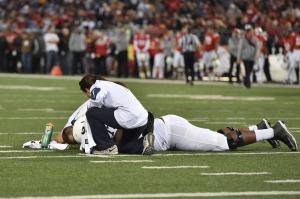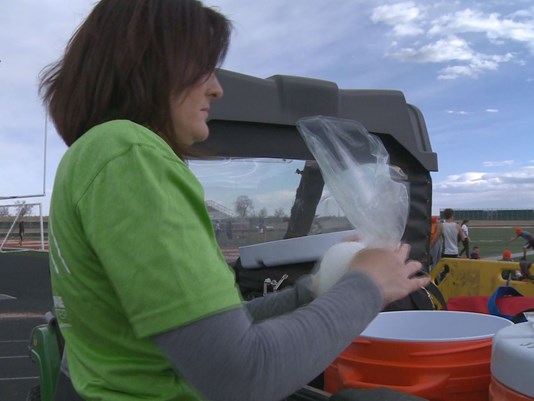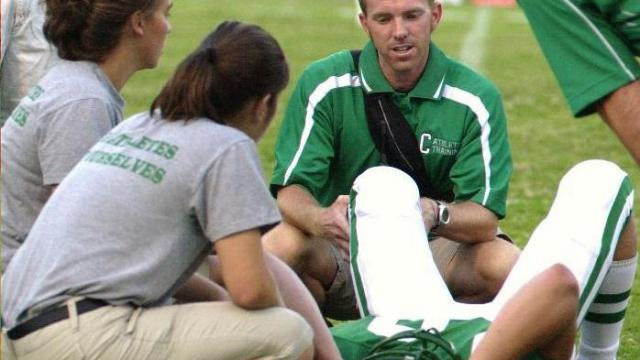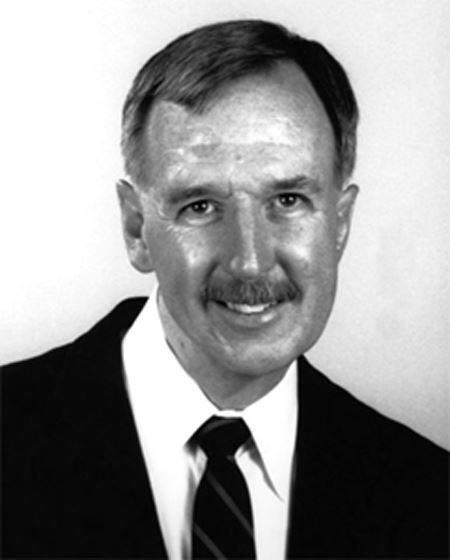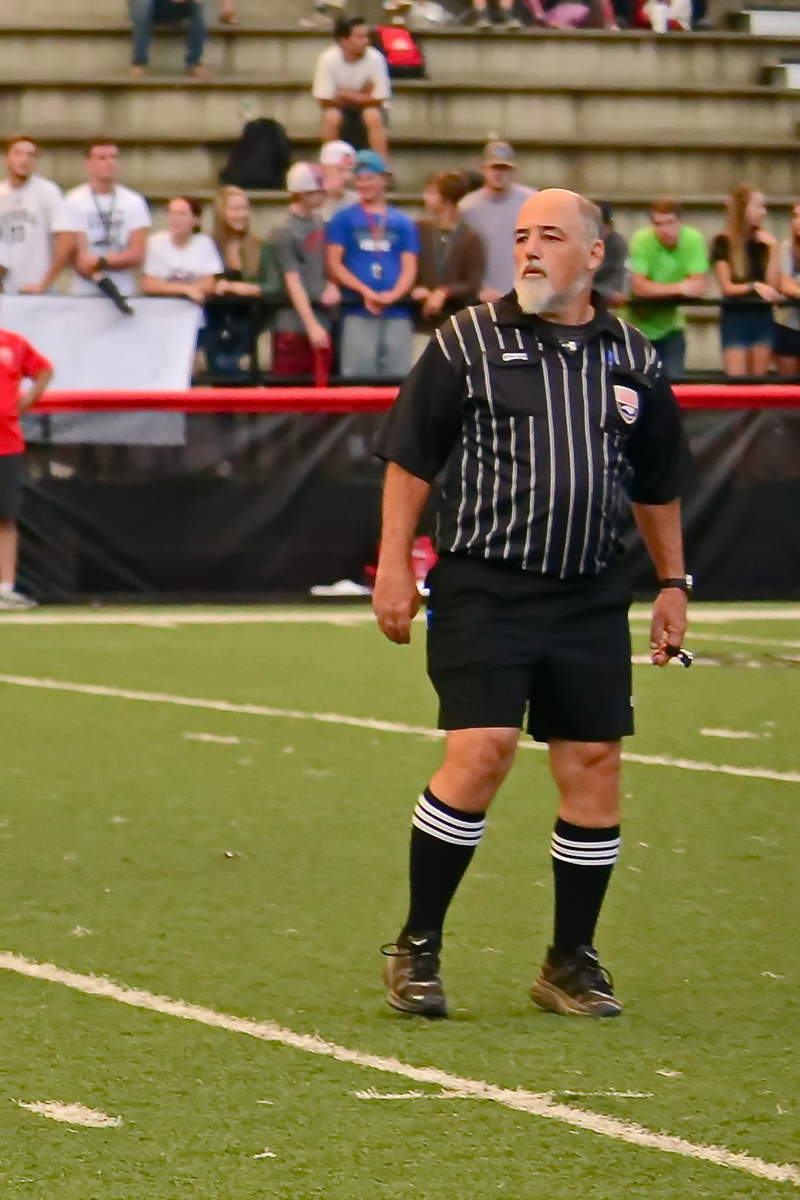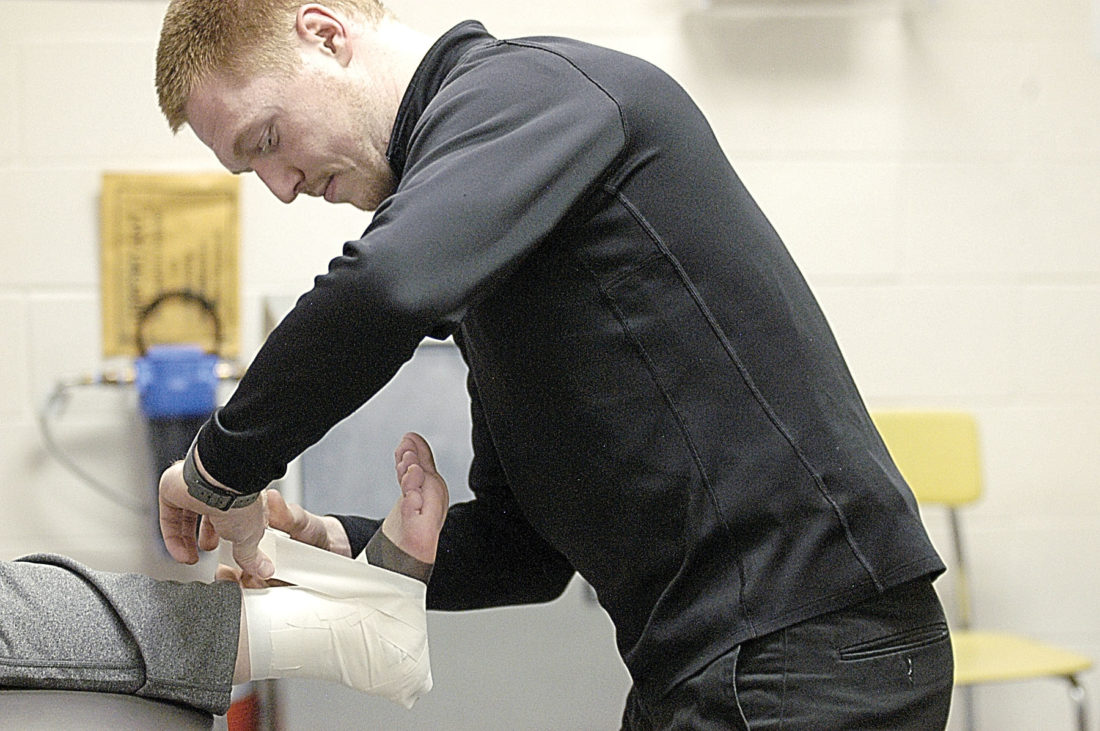
Article reposted from The Journal
Author: JAKE CALHOUN
When people think of athletic trainers, they typically only think of them as the people who provide bags of ice or tape ankles during athletic events.
And even though those are part of their daily routine, there is a much more important role that athletic trainers fill as educators and medically trained professionals.
For the four full-time Certified Athletic Trainers (annotated as “ATC”) from the Courage Kenny Rehab Institute (CKRI) at the New Ulm Medical Center, education has to play an integral role in what they do.
“Because we cover so many teams and so many athletes, education has to be a huge aspect of my job because I can’t watch every specific athlete perform their rehab program or rehab exercise through their strength and conditioning program,” ATC Scott Mangen said. “I need to educate them on how to do it and why they’re doing those certain activities and how it would help them to not only recover from injury, but improve their athletic performance.”
The athletic trainers from the CKRI are contracted with seven high schools, Martin Luther College, three youth athletic programs and the New Ulm Steel junior hockey team to provide medical services for the benefit of the athletes. Without them, injuries or anything affecting athletic performance would not be treated or attended to properly.

Staff photo by Jake ATC Scott Mangen tapes an ankle in the athletic training room at New Ulm High School. Mangen is one of four full-time athletic trainers contracted through the Courage Kenny Rehab Institute at the New Ulm Medical Center.
Marcus Hopp, the Sports Medicine Coordinator for the CKRI in New Ulm, said that athletic trainers act as the bridge between students, parents, coaches and everyone else involved in athletics.
“It’s all centered around the athlete, and these are all different areas that affect the athlete,” Hopp said. “We’re there to make the educated decision on when an athlete should return following an injury — if it’s safe for them to be out there. Coaches want athletes out there all the time, obviously, and it’s our job to make sure that they are safe to be out there.”
With all the extremities that can sometimes surround a student-athlete when he or she is injured, having the athletic trainer there as the informed medical party can mitigate problems that could stem from other motives or miscommunication. Because the safety of the athlete comes first, the athletic trainer is there to reinforce that value.
ATC Tim Seifert said, however, that parents and coaches have become more understanding of injuries than in years’ past.
“A lot of times kids want to play, but it’s for their safety that they don’t,” Seifert said. “Parents, usually they’re pretty understanding. Twenty years ago that might not have been the case, but usually we get pretty positive feedback from coaches and parents.”
Hopp does most of his work at MLC and is assisted by Max Pagel, who is also assigned to Minnesota Valley Lutheran and Gibbon-Fairfax-Winthrop for their medical needs. Because the NCAA requires an athletic trainer be provided at all events by the home team, Hopp is delegated to mostly covering MLC with Pagel filling in wherever else an athletic trainer is needed.
However, because MLC has just men’s and women’s basketball during the winter sports season, Hopp also covers the New Ulm boys’ hockey home games as well.
Mangen is assigned to New Ulm High School, which houses more sports and more student-athletes than the smaller schools in the area, and is also regularly involved with the New Ulm Steel. Seifert is assigned to Sleepy Eye, Sleepy Eye St. Mary’s and Cedar Mountain/Comfrey, while part-timer Denis Berdan is assigned to New Ulm Cathedral.
Due to the wide range of sports in the area, the athletic trainers can be stretched pretty thin in any given season.
The sports that require the most attention are classified as “collision sports,” which have the highest risk of collision-based injuries such as boxing, full-contact martial arts, football, wrestling and hockey. The three prominent collision sports in the New Ulm area are football, wrestling and boys’ hockey — the latter not including girls’ hockey, where checking is not permitted.
With the help of three part-time athletic trainers, Hopp makes sure that everyone is assigned to a high school football game for the seven schools, as is required by the Minnesota State High School League (MSHSL). Athletic trainers are also required to attend wrestling dual meets and tournaments as well as boys’ hockey games due to their classification as collision sports. Gymnastics also takes precedence as well due to the higher risk of injury.
“That’s where you’re more likely to have the more serious injury, the more catastrophic injury — the higher-trauma injury,” Hopp said.
In winter sports — when wrestling, boys’ hockey and gymnastics all take place — Hopp’s staff of athletic trainers rarely get many nights off due to how many events there are in the New Ulm area.
“It is a very busy schedule,” Mangen said. “I probably average working five-to-six nights a week during the winter season.”
The next tier down is “contact sports,” such as soccer and basketball, where the risk of injury is there but is not as high as collision sports. Non-contact sports — such as baseball, softball, tennis and track — occupy the next tier down where injuries are more likely to come in the form of nagging rather than abruptly through contact.
“The sport where you’re more likely to see the most injuries is probably soccer,” Hopp said. “Sometimes those are more of those chronic injuries, not the acute injuries. In track and field, we see a lot of injuries. Most of them are not serious injuries, but they’re your nagging-type injuries.”
Strength training, when done with correct form and proper supervision, is one of the most effective ways to prevent chronic or nagging sports-related injuries during the season. Strengthening the muscles around joints and ligaments protects them and can ensure that they suffer less wear and tear.
Proper training throughout the offseason — instead of just in spurts or limited amounts of time like some do — is the best prevention of in-season athletic injuries.
“Dynamic stretching, weightlifting — we recommend weightlifting to strengthen the muscle tendons — and general conditioning program, but that needs to start weeks-to-month prior to the season, not days,” Hopp said. “Offseason conditioning and strength-training are probably your two best things that can decrease injuries when the season starts.”
Mangen said he sees the highest amount of injuries at the beginning of the season because the student-athletes who injure themselves did not do enough training during the offseason.
“For example, track is starting now and some athletes may not have started running until track starts,” Mangen said. “It’s all about getting acclimated to your sport in time.”
On top of their involvement with the seven high schools, the athletic trainers out of CKRI at NUMC are involved with providing medical services to three youth sports clubs — New Ulm/Sleepy Eye Hockey Association, New Ulm Basketball Association and Rolling Thunder Wrestling.
“It’s good to be involved, especially with youth hockey,” Seifert said. “The coaches have to go through all the concussion training and things like that, so it’s nice to have one of us there if a kid goes down or has neck pain or something, we know what to do to help make sure it’s not something very serious.
“It’s great to get to know the kids and get to know the parents because usually we’re going to be seeing them down the road — in other sports or [on varsity]. We’ll likely work with them later on in life as well.”
Overall, being an athletic trainer is a demanding job. Athletic trainers typically spend at least an hour helping student-athletes prepare for games and an hour afterward treating whatever injuries may occur as well. They work with student-athletes and educate them on the proper ways to prevent sports injury and attend to anything that pertains to their benefit in terms of safety.
Even though there may be times when they may not look like they are doing much during the games, Hopp said there is a lot more work that goes into being an athletic trainer than what many see on the surface.
“Our No. 1 goal is the health and wellness of the athletes,” Mangen said. “This area, we’re pretty lucky for the amount of athletic trainers we have. If I remember my statistics correctly, only 60 percent of high schools in the nation have an athletic trainer who follows up with their sports teams on a regular basis, so we’re pretty lucky.”
At the end of the day — despite the extended hours and endless days — being an athletic trainer can have its rewards.
“The most rewarding part of my job is watching a kid get back to playing,” Seifert said. “Say it’s a long-term ACL injury of somebody I worked with extensively, watching them get out and play again in a sport they really like or being able to get back out there and compete again — I’d say that’s the most rewarding part of my job.”
